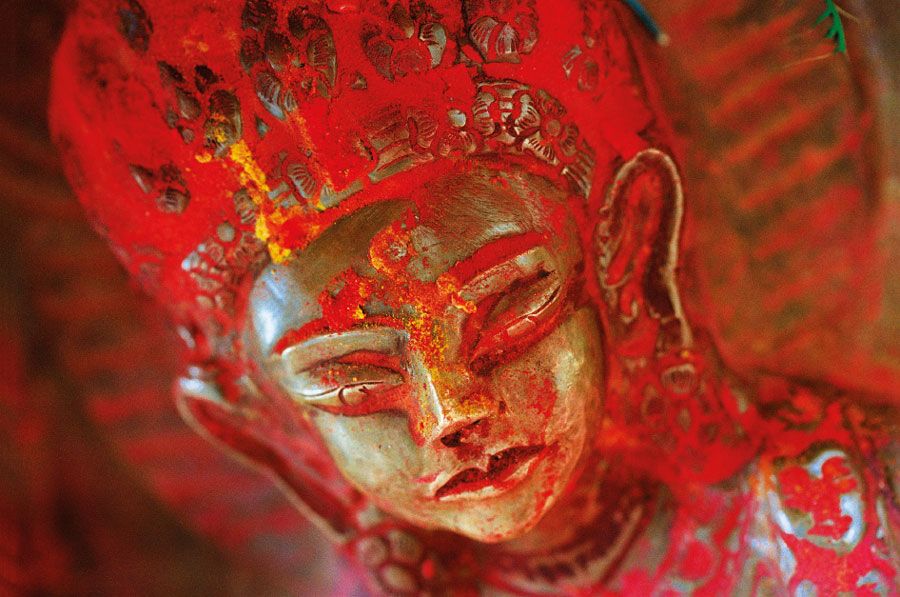United Colors Of Nepal
What is evident in Zdenek Lhotak‘s work from China, Tibet and Nepal is the principle of relation and a tendency to show the cultural background rather in abstract and emotional way than in descriptive way. During his first travel in 1989 Lhotak found for himself a new photographic and human subject. What motivated him to create the black and white Tibet Closed cycle was in the first place the difference between the Tibetan culture and the European focus on consumerism as a way of life. Lhotak then followed up with the United Colors of Nepal series, subject for which he found during his first visit to Nepal in 1994. The variety of color of the great number of mostly Hindu shrines and the patina that comes from the everyday touches of the believers are a testament to the vigor of this exotic culture. With the financial help of the Czech Ministry of Culture Lhotak worked on the subject during his next visits to Nepal and Himalayas in 2001 and 2008. What the color close-ups emphasize above all is the artistic form that elevates the close-up to an authentic and inspirational vehicle for information about the different values of the Eastern cultures. Rich to the point of aggresssion in the composition, the expressive closeups of the Hindu and Buddhist temples and shrines with their clear minimalist symbolism seem like a reflection of Lhotak‘s experience of the exotic culture of the kingdom on the foothill of great Himalayan mountains. United Colors Of Nepal.
LHOTÁK, Z.: United Colors of Nepal. In European Journal of Media, Art and Photography, 2016, Vol. 4, No. 1, p. 20-47, ISSN 1339-4940.

